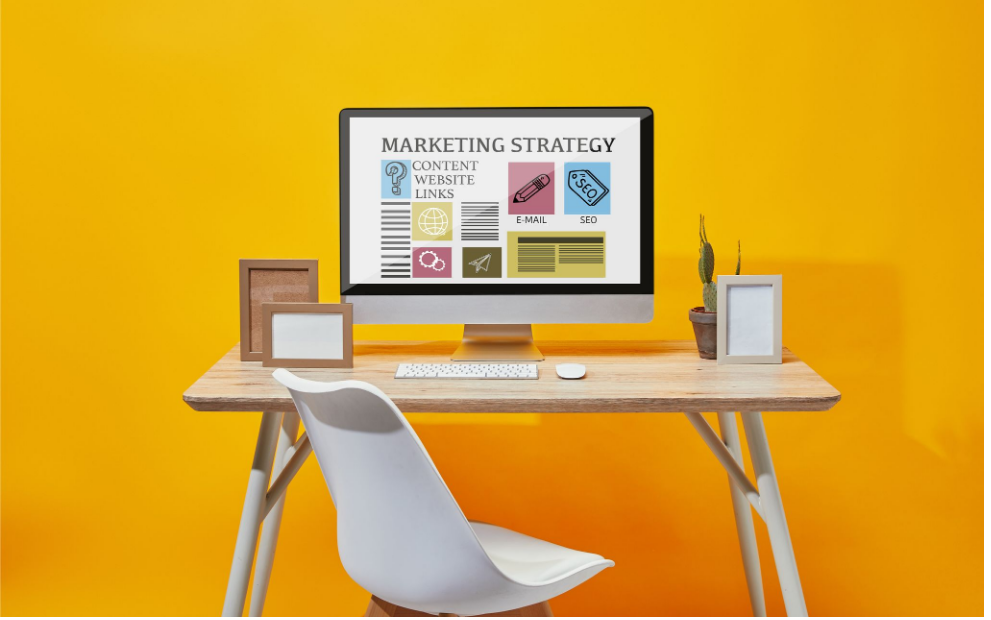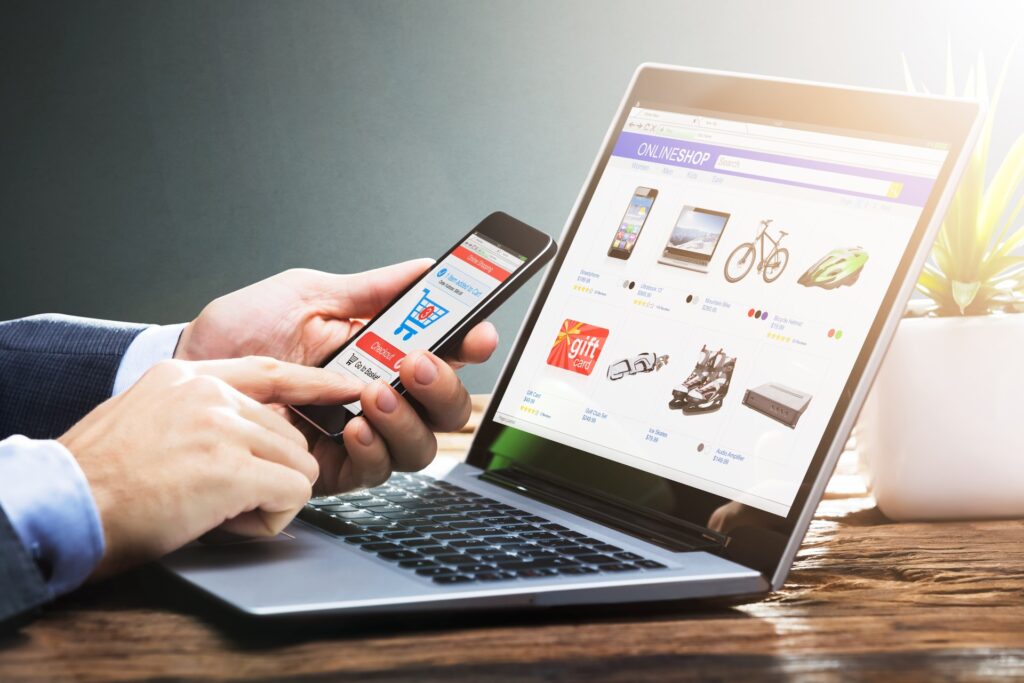Website Design: The Importance of First Impressions
According to a famous quote, you never get a second chance to give a first impression. The first impression we have on businesses is responsible for many of our decisions. Just think of the vast number of places you have been to only once, just because you didn’t get a good first impression from them. When you go to a grocery store and end up walking between aisles of mess and have trouble finding the products you need, you’ll probably not return there for another shopping experience. It’s a competitive world, and even if a customer finds the item at a store, if the experience is displeasing, there will be other stores they’ll visit who are selling the same product.
When we dislike something for the first time, we probably aren’t going to give it a second chance. It’s true when it comes to your eCommerce website too. The first impression is usually the most memorable for your clients, and it is your chance to start building relationships with them. If the first experience with your company turns to a positive experience, your visitors are more likely to be interested in purchasing your products.
First Impression on a Website
We’ve heard a lot of “Don’t judge a book by its cover.” But have you heard don’t judge a website by its design? No, because web design affects how visitors perceive and interact with the site. Design can have a tremendous effect on how a potential customer perceives your business.
Statistics show that first impressions of a website are 94 percent design-related and 94 percent of negative website feedback is also due to design. Additionally, 38% of users will abandon an eCommerce website if the product layout or web design is unattractive. When your site loads in users’ browsers, you have only several milliseconds to captivate their interest so they stay and interact with the site. An experiment showed that people can form a stable first impression within 50 ms of perception and that web designers should aim at providing a positive impression within this time frame.
But the way website design affects the impression isn’t only because of the way a page looks or whether or not it’s beautiful. The concept of beauty is quite arguable, and there is no single page that everyone will find appealing. When we talk about website design and the first impression of a user, we have a clear design in mind, which would allow users to navigate on the site and easily find products. A Stanford study shows that 75% of consumers admit to making judgments on a company’s credibility based on the company’s web design.
The first impression of your visitors may result in staying on the site or going back to search results. Good web design takes into account both the look and the functionality of the site. Users loading your page will look at its layout, colors, font, and images before deciding to stay or leave.
Your web design should be easy to use, so users find the content and products they need, just like grocery stores should well organize products so you can find them easily and don’t wander between aisles having trouble finding items.
If your goal is to bring customers to your site for purchasing products, frustration and confusion is the last thing you want them to experience. A pleasant experience finding the content or products they are looking for will increase the chance of converting them to paying customers. 88% of online consumers are less likely to return to your website if they have an unpleasant interaction with it.
Nobody is going to check out on a website that looks unprofessional, confusing, and unattractive. Besides, people shop online because it’s more convenient, faster, and more comfortable. But if they land on a website that will take their energy and time on a shopping experience that was supposed to be more convenient for them, they are simply going to abandon the site.
You might ask, “but what can go wrong, my website is beautiful!” So is the Sydney Opera House, but would you quickly find your seat if they didn’t have numbers? And even if you knew where the seat was, would you easily get to it if there was not enough space between the aisles? Similarly, customers come to your site to find your products, content, and information about your company. If these aren’t easy to discover, then visitors will not stick around for long.
Things to Avoid to Make a Better First Impression
Some of the things that can negatively affect your visitors’ first experience with the site are:
- a busy layout
- design that is not responsive
- too much text
- small print that is hard to read
- too many fonts and colors
- poor-quality images
- poor navigation
- complicated checkout page
- no search box
- complicated registration page
If visitors don’t like the design and find it difficult to interact with the site, they will return to search results or leave the website.
How to Make a Good First Impression with Your Website Design
1. Be Mobile-Friendly with a Responsive Design
Having a mobile-friendly eCommerce website is crucial, as the majority of the traffic will come from mobile devices. Because you want users to have a pleasant shopping experience, your website needs a responsive and mobile-friendly design. Statistics show that users who have a negative experience in your mobile store are 62% less likely to purchase from you in the future, and 67% of shoppers are more likely to buy from a mobile-friendly site than from one that isn’t.
A good design is not the one for a specific device, rather than all of them. Your site should display properly regardless of the device used to view it. This means having a single, responsive design that will adapt to different devices, instead of redirecting users to different versions of your site.
Besides providing a great user experience by having a responsive design, you will increase your chances of ranking well in search queries as Google will take it into account before providing pages to users in search results. A responsive design also allows Google to crawl your site more efficiently.
Awwwards, a magazine for designers and web developers, listed responsive design as the most crucial feature of a site.
2. Define Your Brand by the Design You Create
By looking at your website, your potential clients grasp your style and understand your company better. Your design makes you different from others and shows the tone of voice your brand uses. If your logo is the only thing that makes your site different from your competitors, it means you should invest more in your web design. A generic design that doesn’t stand out from others will indicate a lack of effort and can decrease your customers’ trust and appeal for your service or product. If you are not willing to invest in the design of your website, then you probably are less likely to care about customers and their experience.
3. Design a Catalog Suitable for Your Customers
Based on who your customers are, you should create a catalog that helps them find your products. The pictures you use should be high-quality and showcase your products in the best possible way. Choose a background color that suits your products and decide on how many pictures there are for each product. The prices should be visible and clear to users in the catalog.
4. Make It Easy for Users to Find Products
Simplicity helps users find products easily. If there are too many things on a single page, users may find it overwhelming. You should organize your products into categories and subcategories that are easy to navigate. It’s best to label categories with single words describing the type of products so users can easily understand which category to click. Besides, it’s crucial to have a search function on the website so users can find the products they want to purchase. The search box should be on every page of your site. There is nothing more frustrating than trying to find an item where there is no search available. And usually, users who use the search box are more likely to purchase as opposed to the ones who are just browsing the catalog. If you add auto-complete functionality to the search, it’ll be much easier for shoppers to find desired products. Additionally, allow shoppers to sort products according to price, newest products, popularity, name, discount rate, etc.
5. Use Colors to Convert More Visitors to Paying Customers
According to a study conducted by the Seoul International Color Expo, over 92% of people said that color plays an integral part when purchasing merchandise.
Colors can play an essential part in your customer’s decision-making process. The colors you use should be consistent across all pages. If you have learned art history or any other subject related to art, you probably have heard about color theory, which explains how humans perceive colors.
According to Shopify, brown may show confidence and can help convert a customer. Orange gives off the feeling of ambition and energetic warmth. It also represents passion, originality, and fresh beginnings. And if you pair orange with cool shades of blue, it can give a positive and exciting vibe to your customers. Yellow can grab customers’ attention, but the excessive use of it can negatively affect your visitors’ decisions about making a purchase. Green is known for its calming and relaxing effects. It’s associated with relaxation and harmony. In 1918 the trade publication, Earnshaw’s Infants’ Department, claimed the “generally accepted rule is pink for the girls and blue for the boys.” We have been raised with the idea that pink is for girls and blue for boys, that’s why many of your male customers might not feel attracted to your pink-oriented design, while females might not like dominant blue in the design. However, blue is associated with trust, peace, and productivity, and many websites that belong to banks use blue in their web design. Red is connected to love and passion, but too much of it can be overwhelming, and customers might not stay on a page with too much red in its design.
White is the dominant color in most eCommerce websites’ designs because it brings a page the feeling of purity and clarity. A white background in your catalog will make it easier to see your products and will bring fewer distractions. The white background allows products to stand out. A small amount of purple can also have a positive influence on your customers’ decisions. If you want to give off a conservative vibe, grey will come handy. Black in eCommerce is used for establishing a confident mood as it’s associated with strength and power.
6. Use High-Quality Images
It’s vital to have high-quality, large images for your products as it is the only way people can look at them. Large images will allow them to zoom in and explore the details of a product. Use different angles of a product so buyers can see how it looks from different perspectives. Images you use should have a consistent style across the page, so the site looks clean and has a wholesome feeling.
7. Make the Checkout Page Simple
Your checkout page should be simple and clear. It’s where your customers are making the final step in the journey of purchasing your products. You don’t need your customers distracted and confused. Make the page easy-to-use and allow users to remove items from the cart if they no longer want them. There should be a minimal number of fields at the checkout. Keep it down to the most necessary fields, such as the address and billing information. Include a progress bar to show users how many more steps are left to complete the purchase.
In conclusion, think about the experience of your customers when creating your eCommerce website. It’s where your customers come to make a purchase, and the process of buying the products should be convenient, easy, and sophisticated. A good design will help you convert your website visitors to paying customers.
If you would like to know more about how Internet Marketing Geeks can help you use design to improve sales of your product or service, reach out to our team of experts for a free consultation today!





